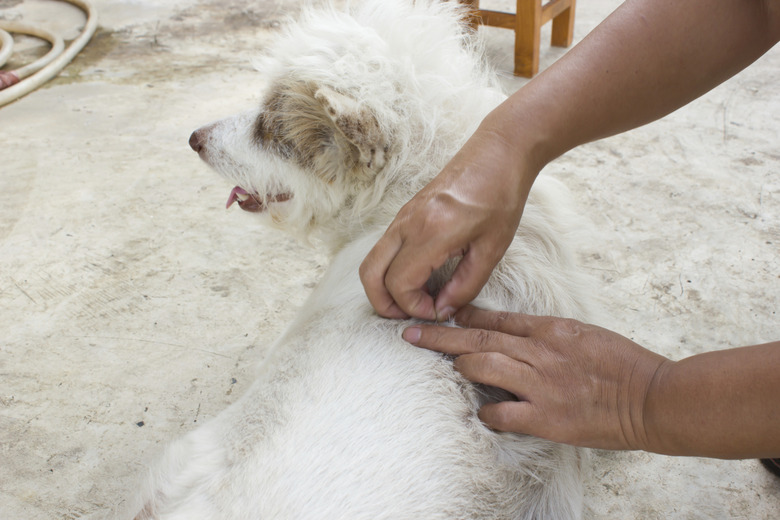What Attracts Fleas?
Fleas are more than a mere nuisance. They're a health hazard for you and your pet. If you've treated your dog or cat with flea medication but the pet is still scratching, you might be unwittingly beckoning to fleas in the environment. Depending on life stage, fleas are attracted to warmth, food, darkness, movement, and your exhaled breath. Fleas in house and home are not only a nuisance but a health risk.
Fleas and health risks
Fleas and health risks
Aside from the agony they inflict upon your pet every time they bite, fleas can cause severe skin irritation in pets who are allergic to their saliva. Flea allergy dermatitis can cause shedding, skin welts, and infection. Steroidal medication may be necessary for treatment.
Fleas are known carriers of the bubonic plague and murine typhus. Fleas transmit tapeworms and mites to dogs and to their humans. Symptoms of parasitic infection include weight loss, vomiting, diarrhea, rectal irritation, loss of appetite, nervousness, and abdominal pain. Mites, meanwhile, cause mange, scabies, and dermatitis. Your dog can get flea anemia and suffer a low red blood cell count, making her lethargic or weak. Her skin might become discolored, and she could collapse.
Fleas in the house
Fleas in the house
Fleas prefer warmer climates to cooler ones. They are most comfortable in temperatures about 65 degrees and will seek warmth in your pet's fur, nestling close to the skin. But that doesn't mean you should stop treating your pets for fleas when winter arrives.
Unless your home is kept at a crisp 64 degrees Fahrenheit or lower in the colder seasons or you are extremely vigilant about vacuuming, chances are the fleas that hopped a ride on your pet during the summer months will snuggle into your carpets or floorboards to ride out winter if they don't stay on their host.
Dark shadows and flea waste
Dark shadows and flea waste
Female fleas lay up to 20 eggs a setting in their hosts' fur. The eggs quickly fall off and land on your carpets, floors and furniture, where they wiggle into shadows, the darker the better, and feed on the undigested feces of adult fleas. Safely hidden out of view, they eventually become pupae and spin silky cocoons from which they will emerge as fully developed fleas. Pupal development takes as little as 10 days; but the adults will not emerge until the sense a host — up to a year later.
Carbon dioxide attracts fleas
Carbon dioxide attracts fleas
A dormant pupa will come alive when it senses body heat, movement, or carbon dioxide from a host's breath. Attracted to green-yellow light or contrasting shadows against a light background, the emerged adult flea will will jump up to a foot high to attach to a host and begin feeding. A newly emerged adult will die if it doesn't feed immediately.
How to repel fleas
How to repel fleas
Take a multifaceted approach to being flea-free. Treat your pets externally with a flea medication containing fipronil or imidacloprid. Oral medication with lufenuron kills fleas that bite pets who have received it. Wash your pet's bedding in hot, soapy water regularly to kill larvae and pupae. If your pet shares your bed, wash your bedding, too. Vacuum or wash area rugs, carpeting, and furniture, including under furniture. Dispose of the vacuum cleaner bag afterward. Steam-clean your furniture, floors, drapes, and upholstery.
Natural flea control remedies that might be effective without exposing your pet to chemical agents include diatomaceous earth and some formulations with pyrethrin, derived from the head of a flower, or d-Limonene, a citrus derivative.

